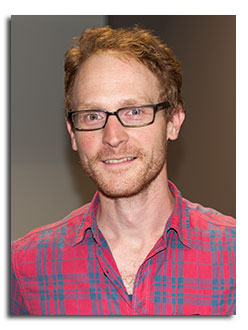
Abstract
Up-conversion for crystalline Si photovoltaics: realistic efficiency limits and enhancement in photonic structures
Up-conversion (UC) has been proposed as a means of breaking the Shockley-Queisser limit by converting the sub-band-gap portion of the solar spectrum into shorter-wavelength light. While the limiting efficiency of ideal UC-PV is lower than that of other Third Generation concepts, its simple realisation suggests that it is a viable near-term solution for commercial devices. In particular, it has been assumed that the application of a UC layer to the rear of a conventional Si solar cell---to boost its limiting efficiency to near 40%---will secure a prominent commercial position for the technology.
In this talk I will discuss the engineering challenges involved in the design of a c-Si-based UC-PV device: using a detailed balance framework, I first develop a generalised model of a 'realistic' c-Si solar cell and discuss the deviations from ideality that have an especially significant impact on UC-PV efficiency.
Second, I incorporate the substantial non-idealities of erbium-based UC layers into the model and discuss their on UC-PV device efficiency. The results indicate that it will be difficult to experimentally demonstrate increased c-Si solar cell efficiency by the application of an erbium-based UC layer without substantial improvement of the optical properties of the materials involved.
Third, I demonstrate that absorption in UC layers may be increased above the bulk value if the layer is designed to function as a one-dimensional photonic crystal. In an appropriately-designed structure, the velocity of energy propagation may slow to a crawl---tens of times slower than the speed of light in vacuum---resulting in high energy densities. Pumping optical transitions in these 'slow light modes' results in strong absorption, which may lead to higher UC-PV efficiency. I will demonstrate the calculated impact of this effect as well as experimental evidence of absorption enhancement in Si-based erbium-doped photonic crystals.
Click here to see all available video seminars.
Click here to go to the SPREE HOMEPAGE.
Brief Bio
CRAIG JOHNSON received a Bachelor of Science in Electrical Engineering from the Georgia Institute of Technology in 2007 and has been at SPREE since 2008. He has just submitted his PhD and is now working on plasmonics with Dr. Supriya Pillai.
